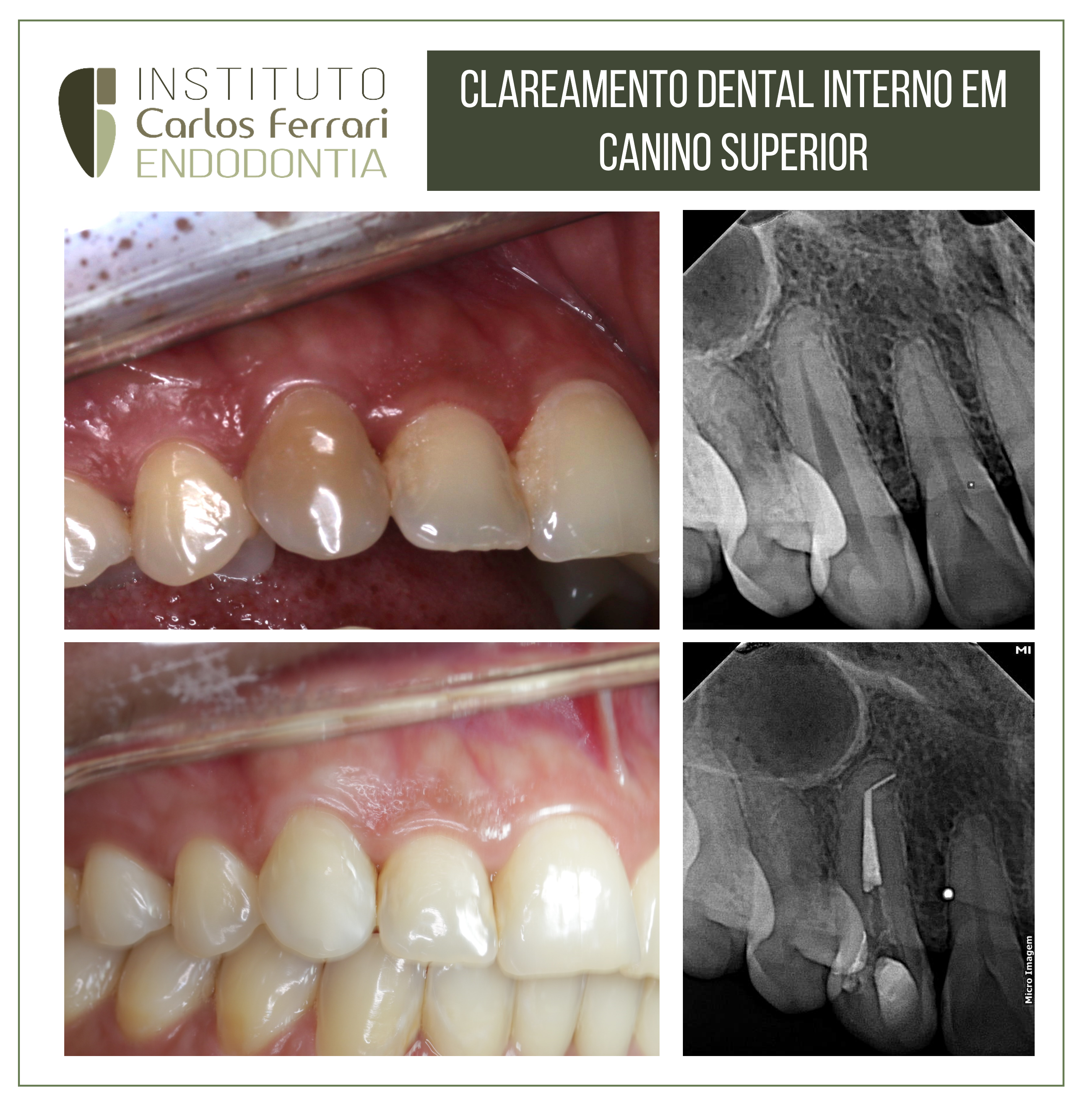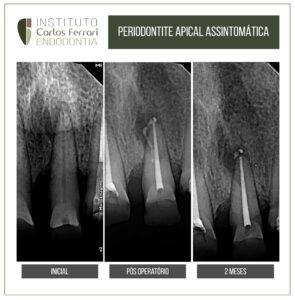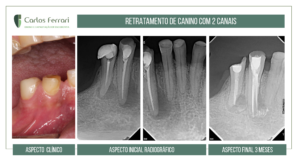Clareamento dental interno.
Clareamento interno em dente com necrose pulpar pela técnica mista. 45 minutos em consultório e uma aplicação de clareador interno por uma semana.
Clareamento dental interno in: Canuto et. al. Clareamento dental interno. Relato de caso. REAS/EJCH | Vol.Sup.n.48
INTRODUÇÃO
Há décadas considerava-se função básica dos dentistas os tratamentos restauradores, esta função está sendo revista atualmente. Conforme a diminuição dos índices de lesão cariosa e a acuidade de que a estética dental possui influência na autoestima e no convívio social, o direcionamento é voltado a odontologia estética (BADOLE GP, 2013).
Quando se utiliza dos atuais padrões de beleza, o sorriso tem grande relevância, e tem sido visto por muitos, como um meio de comunicação interativa de grande importância na sociedade. Assim sendo, dentes escuros é o motivo de maior insatisfação em relação à estética dental, e torna o clareamento o procedimento estético mais procurado na odontologia (SOUZA CR, et al., 2017).
Incentivadas pela crescente busca por esse tipo de procedimento, as empresas passaram a investir em pesquisas na área estética da odontologia, desenvolvendo novos produtos com tecnologias cada vez mais atuais, de modo a satisfazer os anseios da população (CONSOLARO A, 2008). Transformações cromáticas podem ser ocasionadas por diversas razões, como: hemorragia decorrente de trauma, técnica terapêutica inadequada, espaço de tempo entre o traumatismo e o atendimento odontológico, tempo de permanência da restauração provisória após o tratamento de canal, entre outras causas (SOUZA CR, et al., 2017; CARDOSO RM, et al., 2011).
Estão disponíveis ao Cirurgião-dentista diversos materiais clareadores e técnicas diferentes para alcançar o clareamento dos dentes, isso torna discutível a escolha do material e técnica. Atualmente, a odontologia preocupa-se com a conservação das estruturas dentárias, e por isso, técnicas menos invasivas costumam ser mais estudadas (CIOFFI SS, et al., 2011). Com base em alguns estudos, o clareamento interno tem sido o tratamento mais indicado para casos de escurecimento da coroa dental em dentes que sofreram trauma e posteriormente foi efetuado tratamento endodôntico.
Geralmente os dentes que se apresentam íntegros quanto a suas cristas marginais e coroa clínica com pouco ou nenhum material restaurador (SCHWENDLER A, et al., 2013). Os tratamentos de clareamento interno são conservadores, porém só atendem a necessidade de alterações cromáticas e não de forma dos elementos dentais. São procedimentos convenientes e de valor acessível em comparação a outras técnicas restauradoras como, resinas compostas, laminados e coroas de porcelana (LUCENA MTL, et al., 2015). Há séculos existe tratamento com clareamento dental em dentes não vitais, porém, não deixa de ser um grande desafio para os profissionais cirurgiões dentistas, devido aos resultados das técnicas utilizadas e sua manutenção a longo prazo não possuírem previsibilidade. De todo modo, o profissional não é capaz de assegurar ao paciente sucesso ao tratamento no dente envolvido ao tratamento (BADOLE GP, 2013).





